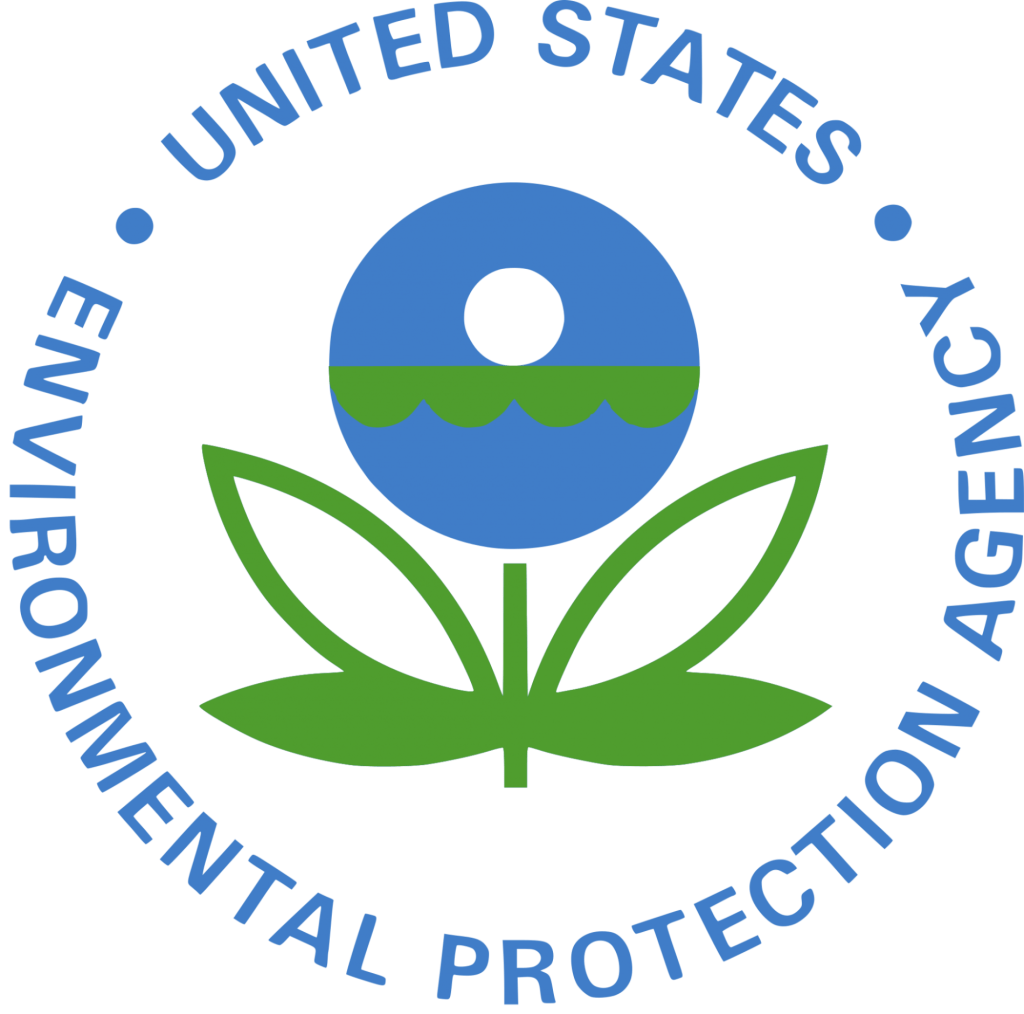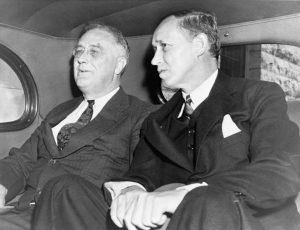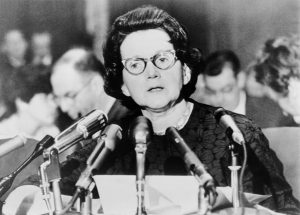As our society continues to grow and increase in population, more and more people use the earth’s resources. The use of these resources affects the land, water, air, and even human life. Taking advantage of these resources can lead to negative effects on one’s health or on the condition of our environment. Because of this, restrictions are created to sustain the earth and its resources. While concern for the environment has been decades in the making, it was not until 1970 that the environment received its most powerful ally in the creation of the United States Environmental Protection Agency (EPA).
The events that led up to the establishment of the EPA were influenced by the involvement and actions of a series of Presidents. President Theodore Roosevelt was one of the first presidents to recognize the importance of focusing on environmental issues. The four main issues he focused on were: reforestation, topsoil erosion, conservation of resources, and water pollution. President Kennedy was another president to address environmental issues. One of his best decisions was in appointing Stewert L. Udall as Secretary of Interior. Udall worked with Congress to bring investments to National Parks and other recreational areas. This was to promote awareness to the public on conserving the environment. President Johnson and his wife were also involved in environmentalism. Ladybird Johnson was involved in a campaign called “Beautify America,” which sought to clean up the environment. Environmental groups were formed, such as the Environmental Defense Fund and Friends of the Earth. In 1968, there was a law that prevented construction to take place around any system associated with the Grand Canyon. After that, President Johnson established the National Wild and Scenic River System. Finally, President Richard Nixon signed the National Environmental Policy Act (NEPA). These were all contributing steps that resulted in the establishment of the EPA.1

In 1970, President Nixon submitted an Executive Order to create the Environmental Protection Agency. The purpose of this agency was to inform the public with information about the environment and to set regulations in order to protect it. This included the protection of water, air, land, and human life since the environment effects our health as well.2 During the 1960’s, there was great need for environmental regulations; however, there were other agencies that had existed for that purpose. These agencies were not as organized and as consistent in regulating the environment as the EPA.3 The air in major cities in the 1960s became more contaminated as air pollution increased. In 1963, there was an increase in smog in the atmosphere in New York, which caused four hundred people to die from these atmospheric conditions.4 Another environmental incident occurred in California where an oil spill covered four hundred square miles of the Pacific coastline with slime that killed hundred of animals, including many birds.5 These were but two events of many that displayed how the environment was affected by human activity. This led to the formation of the Environmental Protection Agency. However, before the EPA was formed, there were a few agencies that already existed, such as the Environmental Quality Council, established by President Nixon in 1969. This then allowed Congress to pass the Environmental Policy Act of 1969. President Nixon then formed the EPA one year later to take more responsibility over the smaller environmental agencies.6 By 1979, twenty-seven new environmental laws and regulations were formed from the EPA, some of which included the Resource Recovery Act, and the Clean Air and Clean Water Acts.7

The Environmental Protection Agency is separated into ten regions in the United States, each of which is responsible for environmental oversight in three to five states. The purpose of this is so that each region is able to supervise individual states to make sure regulations and laws are enforced. In some cases, the EPA has been sued. Industries would sue the EPA if regulations seemed impossible to meet. Environmentalists sued the EPA as well because they felt the agency was making slow progress in environmental sustainability. The EPA enforced “Clean Up” regulations, where polluting industries would be required to clean up or reduce the pollution they caused in productions. For example, Love Canal in New York was a target for clean up regulations. A chemical company was responsible for restoring and cleaning Love Canal, since it had contaminated the canal with waste and other chemicals. New York had declared this incident as a health emergency in 1976. The intentions of these regulations was not only to keep water clean, but to protect people from contamination.8 A goal of the Environmental Protection Agency was to inform the public about the environment and how their everyday lifestyles affect the earth. The EPA in the 1990’s changed from focusing on environmental regulations and laws, to figuring out ways to prevent pollution and contamination.9
The Environmental Protection Agency helps to save our environment from the negative impacts of human activity. President Nixon’s choice in establishing the agency was a great idea because if it had not been created, the condition of our environment would have become worse. The EPA has also spread awareness to other countries that do not have environmentally-regulated industries on how we must protect our earth for later generations to come.
- D. T. Kuzmiak, “The American Environmental Movement,” The Geographical Journal vol. 157, no. 3 (Nov 1991): 269-271. ↵
- Encyclopedia of Environmental Ethics and Philosophy, 2009, s.v. “U. S. Environmental Protection Agency,” by Robert Collin. ↵
- Encyclopedia of Environmental Ethics and Philosophy, 2009, s.v. “U. S. Environmental Protection Agency,” by Robert Collin. ↵
- Lily Rothman, “Here’s Why the Environmental Protection Agency Was Created,” Time Magazine, April 4, 2017. ↵
- Lily Rothman, “Here’s Why the Environmental Protection Agency Was Created,” Time Magazine, April 4, 2017. ↵
- Lily Rothman, “Here’s Why the Environmental Protection Agency Was Created,” Time Magazine, April 4, 2017. ↵
- Encyclopedia of Environmental Ethics and Philosophy, 2009, s.v. “U.S. Environmental Protection Agency,” by Robert Collin. ↵
- Encyclopedia of Environmental Ethics and Philosophy, 2009, s.v. “U.S. Environmental Protection Agency,” by Robert Collin. ↵
- Encyclopedia of Environmental Ethics and Philosophy, 2009, s.v. “U.S. Environmental Protection Agency,” by Robert Collin. ↵



42 comments
Richard Navarro
It has always bugged me that pollution and things of that nature take such a huge toll on our environment. I wonder how effective EPA has been throughout the years. I wonder what would happen if everyone gained the knowledge of EPA and how pollution harms the environment and animals how different things would be? This is a good article. It brings up a lot of questions about what can be done to help our world.
Alejandra Chavez
This was a very well written, informative essay. One of the many things I found to be surprising was that this was somewhat recent, it hasn’t been a century since the Agency was created. I also found interesting was that a first lady was taking initiative to resolve an issue present. I had never heard of the man who was appointed as secretary of Interior (a term of which I have never heard of) and that there were a few similar agencies before the official EPA was created.
Crystalrose Quintero
I was really able to better understand the importance of EPA after reading several examples of the type of environmental issues that were negatively impacting the world. This really set a perspective on the real need for EPA. I also really like that it describes other agencies similar. Just like a lot of things that get created theres more than one attempt but to be able to explain what sets them apart really paints a better picture. I also enjoyed that even though it credited the agency to president Nixon, it clearly indicated the other presidents involved in getting the agency moving.
Michael Mandujano
Our society is heavily populated and our population is continuously increasing. In fact, our society consists of major industrial factories. With population and industrial factories in mind, our society will experience and be heavily exposed to large amounts of gases that contaminate the air that humans inhale. President Nixon implementing the formation of the Environmental Protection Agency (EPA), is a unique law. The EPA is efficient because it enforces regulations upon the amount of resources our people can consume. This article was very informative and gave me a greater overview on how the EPA functions.
Justin Garcia
This is a good article in describing the The U.S. Environmental Protection Agency. It is structured very well and shows you have a great understanding in the Agency’s history. I believe however that more information and examples could have really reinforced this article’s point. For instance at the beginning of the article bringing forward effects of problems such as global warming would have really grabbed the readers attention more as well as have them think about the problem to themselves. Overall still a good article.
Karla Chavana
I in my view the regulation and the upkeep of laws pertaining to the protection of the earth are vital. I think that President Nixon did a revolutionary and very logical decision when vouching for the Environmental protection agency. It is hard for the world to acknowledge something that it is not often considered, such as our environment; and I think from that point on the harm that we, human have made has become not only recognized but unacceptable.
Joel Gracia
This article informed me of an organization that I should have already known more about, being that I feel strongly about the issues facing our environment in our current day and age. Its sad to see how much initiative these former presidents took in cultivating movements aimed at preserving the planet compared to the lack of initiative from our current leader.
Samman Tyata
I really found this article really interesting and i also got the chance to know about something new. As the population of the world is rapidly going up, the resources are also degrading at a faster pace. So sustainable development should be there. Apart from that, i am very grateful to EPA that it is doing its best to save the environment and raise awareness. I really liked the concept of dividing EPA into different regions so that each region was able to focus more for enforcing rules and regulations. To sum it up, it was a good read.
Ernie Sano
In order to secure a stable future, one must not only worry about social relations in the world, but one must worry about our relationship with the natural world. Environmental policies are an effective way to prevent the rapidly declining condition of Earth from having disastrous consequences that will not allow sustainable life. It is within humanity’s best interest to continue making changes to our polices and habits if we are to continue inhabiting the planet.
Sarah Mares
The Environmental Protection Agency (EPA), is known across the U.S. as the agency responsible for guarding natural environments and habitats from the toxicity and damage of easily overlooked human/society activity. Prior to reading this article, I had known of President Nixon signing off on EPA, but was unaware of the three (and possibly more) preceding Presidents that were all determined to do the best for the environment. President Roosevelt was for reforestation and water pollution, President Kennedy for public promotions of conserving National Parks and lands, and President Johnson for the “Cleaning Up” of the environment. All great U.S. leaders who, although may not have worked side by side, brought together their ideas and beliefs to establish an agency that has big plans to save the planet from its harmful inhabitants.